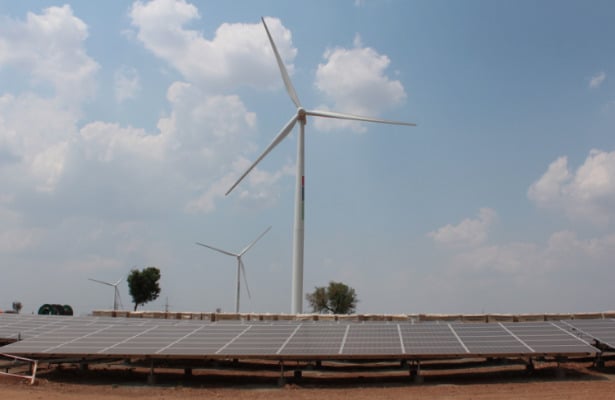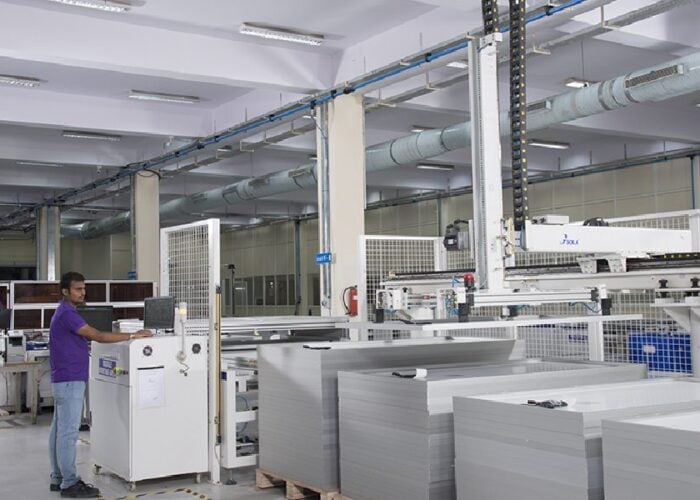
UPDATED: India’s Ministry of New & Renewable Energy has released its ‘National Wind-Solar Hybrid Policy’ seeking to encourage hybridisation of projects due to the benefits they offer for grid integration.
A draft policy was first issued in June 2016 and has now been finalised after consultation with stakeholders. Studies have shown that combining wind and solar helps to minimise the variability of power output from such technologies and thereby reduce the threats posed to grid security and stability. Moreover, wind and solar resource maps have discovered significant areas in India where both solar and wind have a high to moderate potential.
Unlock unlimited access for 12 whole months of distinctive global analysis
Photovoltaics International is now included.
- Regular insight and analysis of the industry’s biggest developments
- In-depth interviews with the industry’s leading figures
- Unlimited digital access to the PV Tech Power journal catalogue
- Unlimited digital access to the Photovoltaics International journal catalogue
- Access to more than 1,000 technical papers
- Discounts on Solar Media’s portfolio of events, in-person and virtual
Hybrid systems involve solar PV systems and wind turbine generators being configured at the same point of connection. In order to be classed as 'hybrid', the rated power capacity of one source of energy must be at least 25% of the rated power capacity of the other resource.
Reactions to the policy have varied:
Anmol Singh Jaggi, co-founder, solar O&M and advisory firm Gensol Group, said: “The policy is just in time and would pave the way to a even more low cost green energy due to efficiencies of coupling wind & solar infrastructure and hopefully by including some portion of energy storage we can get round-the-clock green energy.”
Vinay Rustagi, managing director of consultancy firm Bridge to India, said: “We think that this policy will do little to advance hybrid systems in India. It is completely silent on providing a framework for converting existing wind or solar plants into hybrid plants. On this basis, it seems that the only real opportunity lies in new specific procurements by government agencies.”
India’s Ministry of New & Renewable Energy has released its ‘National Wind-Solar Hybrid Policy’ seeking to encourage hybridisation of projects due to the benefits they offer for grid integration.
A draft policy was first issued in June 2016 and has now been finalised after consultation with stakeholders. Studies have shown that combining wind and solar helps to minimise the variability of power output from such technologies and thereby reduce the threats posed to grid security and stability. Moreover, wind and solar resource maps have discovered significant areas in India where both solar and wind have a high to moderate potential.
Hybrid systems involve solar PV systems and wind turbine generators being configured at the same point of connection. In order to be classed as 'hybrid', the rated power capacity of one source of energy must be at least 25% of the rated power capacity of the other resource.
MNRE said that in areas of good wind power density, the size of solar PV added can be relatively smaller. Whereas, the amount of solar should be relatively higher if the wind power density is moderate or lower.
Adding battery storage to such projects has also been deemed an appropriate method of further smoothening the power output.
The new policy aims to provide a framework for large-scale hybrids, while also encouraging new technologies and methods to carry out hybridisation. It is also encouraging the procurement of hybrid power through transparent bidding processes, which could take into account capacity delivered at grid interface point, effective capacity utilisation factor (CUF), and the unit price of electricity.
Integrating solar and wind can be approached in different ways.
The policy stated: “In case of fixed speed wind turbines connected to the grid using an induction generator, the integration can be on the HT side at the AC output bus. However, in case of variable speed wind turbines deploying inverters for connecting the generator to the grid, the wind and the solar PV system can be connected to the intermediate DC bus of the AC-DC-AC converter.”
Existing projects wishing to go hybrid may do so under various conditions. These mainly relate to transmission charges and transmission capacity as well as separate rules for AC and DC integration of such projects.
Power generated from hybrids may be used for:
- Captive purpose
- Sale to third-party through open access
- Sale to Discoms either at tariff determined by the respective State Electricity Regulatory Commissions (SERC) or at tariff discovered through a transparent bidding process
- Sale to Discoms at average power purchase cost (APPC) under Renewable Energy Certificate (REC) mechanism and avail RECs
State or Central entities can also bid out projects for the hybridisation of existing projects connected to the Interstate Transmission System (ISTS).
In the case of adding battery storage to these projects, bidding factors may include minimum firm power output throughout the day or for defined hours during the day, the extent of variability allowed in output power, and unit price of electricity.
The Central Electricity Authority and CERC shall deliver standards and regulations for hybrids. All fiscal and financial incentives available to wind and solar power projects will also be made available to hybrid projects.
The policy will remain in place unless withdrawn by the government and will be reviewed as and when required. The original draft policy had targeted 10GW of hybrids by 2022, but no target has been set in the final policy.
PV Tech recently reported from Hero Future Energies' inauguration of India’s first large-scale solar and wind energy hybrid project in the state of Karnataka.
Article updated to include comment from Gensol and Bridge to India.







